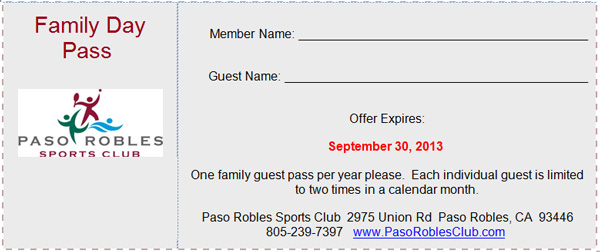September Newsletter 2013
Back to School….Back to Fitness
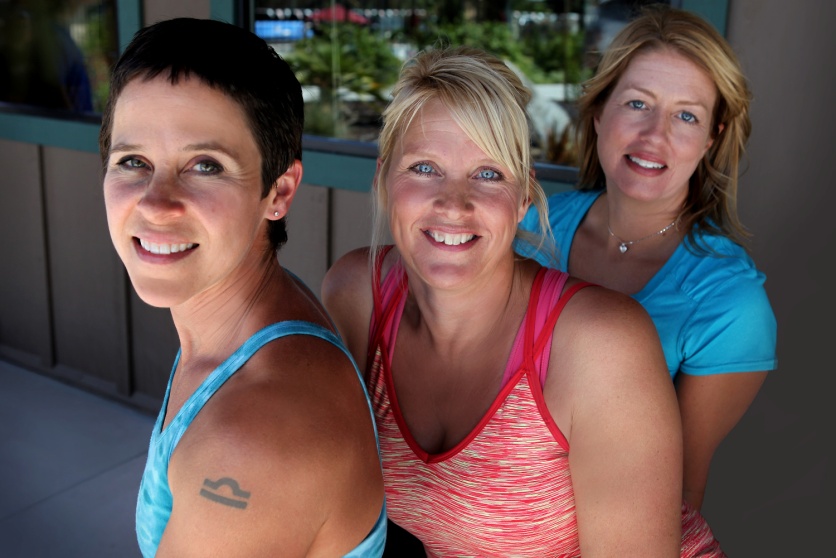 Parents…the time to put you first is now. Your children are back in school, so take the few extra minutes in your day and schedule in your exercise! We are introducing our Fall Fitness Challenge (signups to begin September 23rd). This complimentary program runs from October 1st to November 9th. Our certified personal trainers will help you find your starting point and measure your progress. Personal training is available upon request at 50% off the regular rate while enrolled in the Fall Fitness Challenge. For more information, contact Dr. Andre Acebo at 805-712-7769 or email at [email protected].
Parents…the time to put you first is now. Your children are back in school, so take the few extra minutes in your day and schedule in your exercise! We are introducing our Fall Fitness Challenge (signups to begin September 23rd). This complimentary program runs from October 1st to November 9th. Our certified personal trainers will help you find your starting point and measure your progress. Personal training is available upon request at 50% off the regular rate while enrolled in the Fall Fitness Challenge. For more information, contact Dr. Andre Acebo at 805-712-7769 or email at [email protected].
Other available programming during our fall season: MaxFit*, Karate* with Lloyd Nelson, AquaZumba, Zumba, AquaFit, Indoor Cycling, Yoga, Sculpt and TRX! Please help us help you get back into YOUR routine.
*fee associated with these classes
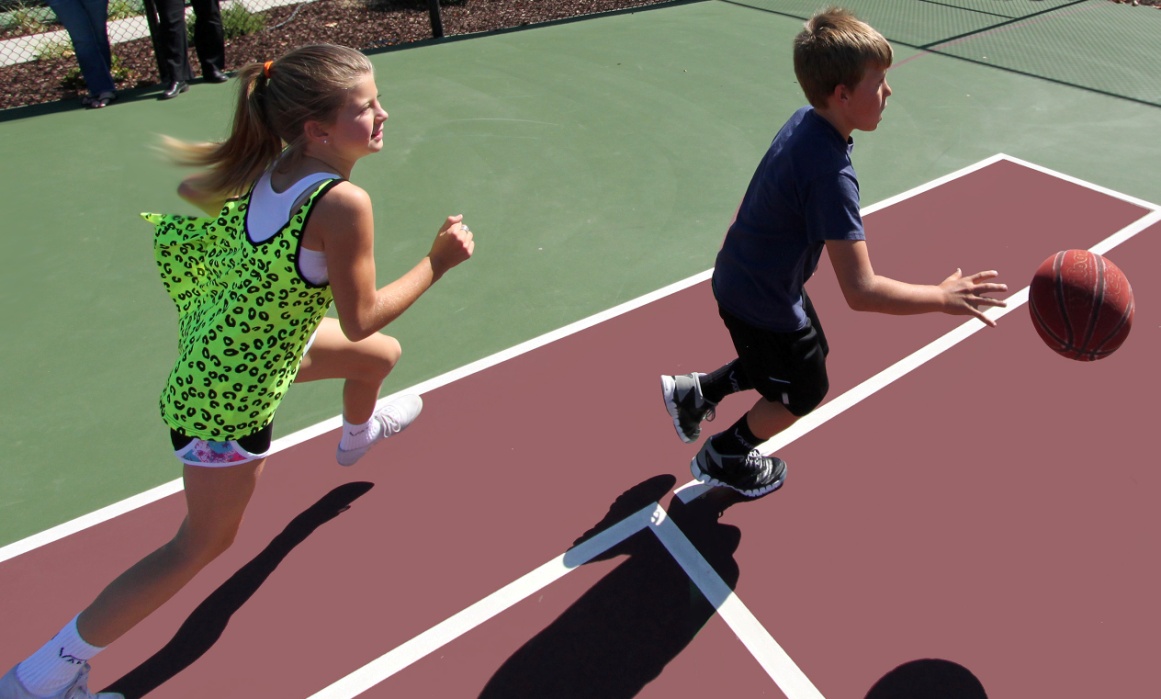 Also, now that school is back in session….
Also, now that school is back in session….
check-out our new FitKids Schedule:
 3:30 – 4:00 pm- Ages 3-4 year olds
3:30 – 4:00 pm- Ages 3-4 year olds
4:00 – 4:45 pm- Ages 5-9 year olds
4:45 – 5:30 pm- Ages 10-13 year olds
This is a great time for you to schedule in your fitness. We are getting new equipment and can use our upstairs air-conditioned fitness room. We will also have assistant trainers who can answer your questions about the program while your kids are at play. Come check it out.
Serve/Overhead
By Tennis Director Mariano Parris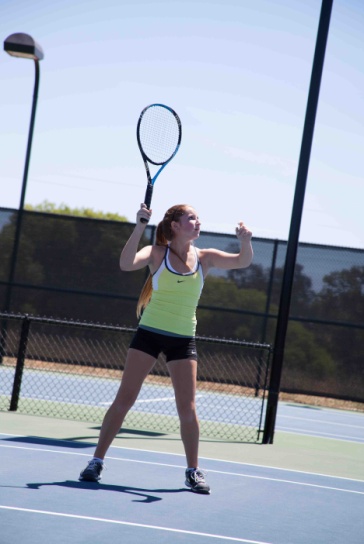 Developing your overhead will improve your serve.
Developing your overhead will improve your serve.
Trophy PositionGetting the racket head up and keeping the racket head above the grip until just before contact will create more power to put the ball away in the overhead.Lindsey has her racket head pointing perfectly to the sky in this example.
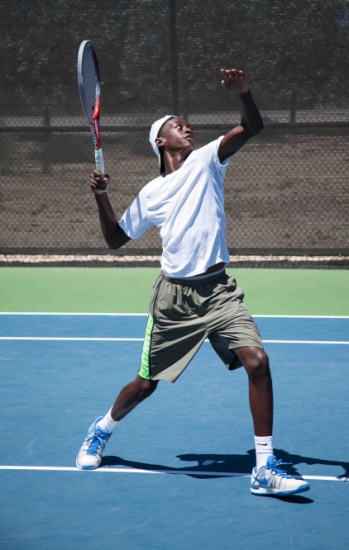 Getting under the ball
Getting under the ballOnce you get into the trophy position it becomes a matter of moving under the ball. Your front foot should be receiving all the body weight possible while still maintaining the racket head up position as long as possible. Dropping the racket down too early will cause you to lose power and it will make it harder to hit the ball on the desired point of contact. Jarred is stepping into the ball, racket head is still pointing up in this example.
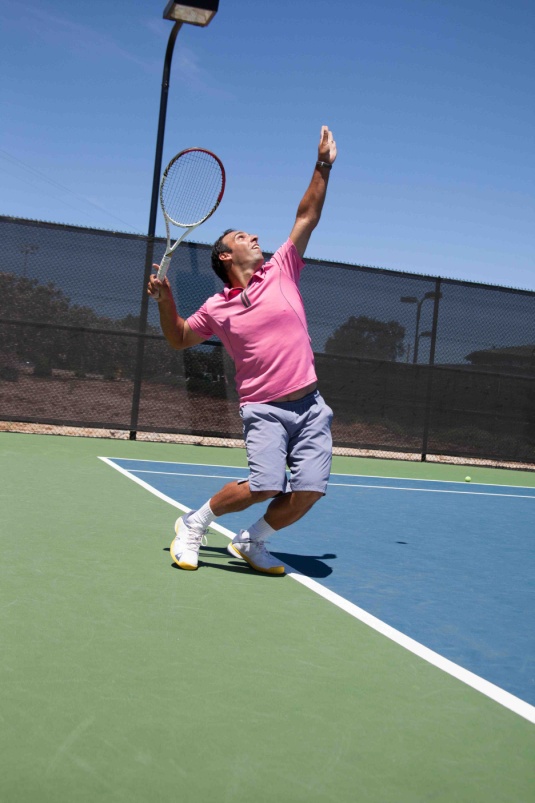 Serving...
Serving...You should keep the trophy position for as long as possible, before the time to swing and making contact with the ball. The top players will pause after tossing the ball and stay in this position for as long as possible, just as described in the above overhead.
There is no need to drop the racket head down unless you are ready to take a swing at the ball.
In other words, the racket can only stop moving when you are in the trophy position.
WHAT RECREATIONAL PLAYERS SHOULD COPY FROM THE PROS
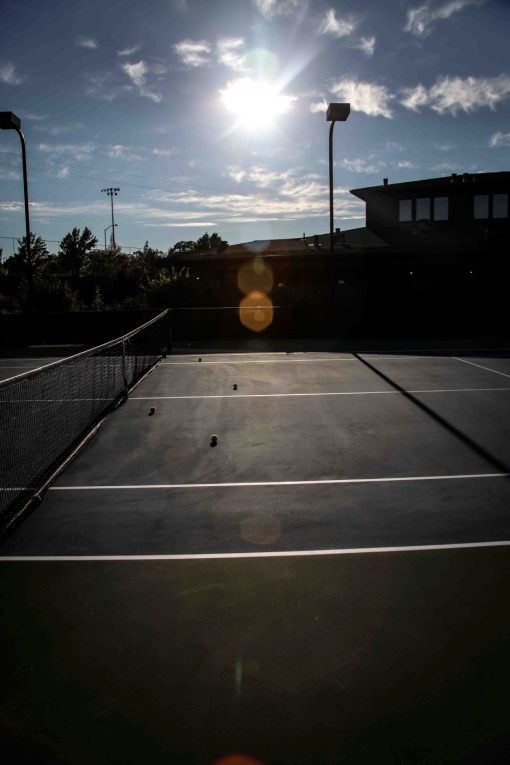 Professional tennis players practice what they do thousands of times each week and have been doing so since their age contained only one number. To do what they do demands years of practice, training, work and commitment none of us at the club level can emulate. So the question becomes, “Should we try to copy Rafa’s reverse forehand finish, Djokovic’s slide on hard courts and almost everybody’s inside out forehand? Can we actually learn anything from our “tennis idols”?
Professional tennis players practice what they do thousands of times each week and have been doing so since their age contained only one number. To do what they do demands years of practice, training, work and commitment none of us at the club level can emulate. So the question becomes, “Should we try to copy Rafa’s reverse forehand finish, Djokovic’s slide on hard courts and almost everybody’s inside out forehand? Can we actually learn anything from our “tennis idols”?With a lot of tennis on T.V. this summer and a lot of coverage currently with the U.S. Open currently being held, I thought it might be a good time to review what you can and can’t learn from viewing how the pros play. Take a look and determine for yourself. Were you focusing on the right things?
1. Look how consistent they get the return of serve back; and how they step in to take advantage of weak second serves. Most of our courts are filled with doubles play and we all know how hard and how critical it is to become a great returner and break serve in doubles. A good phrase to remember – “First serve back, second serve attack”.
2. Observe how big their target areas are versus going for the lines. 80% of most shots land well away from the side and baselines, however, tennis observers typically only remember when the pros haul off and crack a winner landing on or just inches from the side or bases lines. Sometimes it’s OK to hit the ball hard and sometimes it’s OK to go for the lines, just don’t try to do both on the same shot! Aim 4-6 feet away from the lines, depending on your skill level. You’ll be more consistent, hit fewer errors and win more matches.
3. Watch how some pros try to break the rhythm of their opponents with slices, different spins and deep high shots. (Watch Aggie Radwanska play on the women’s tour if you get a chance She’s gotten to number 4 in the world without overpowering everybody with just huge baseline shots). Mix up your game, experiment a bit with some new shots/strategies with a reasonable expectation of time to gain a level of comfort. You’ll have fun learning new skills and enjoy the game more.
4. The most important aspect in the game of tennis today, and something we can really learn from watching the pros and can incorporate into our own game, is about how the pros move their feet. Stop your tendency to watch the ball go back and forth over the net for a few games and focus on the footwork of the player closest to the camera. Turn up the volume, and take notice of the sound of when the opposing player strikes the ball, and the timing when their opponents do their “split step”. Notice, do the pros really use cross over steps a lot, or are they mostly shuffling side to side? After they hit the ball, depending on where their own shot lands, where do they recover to on the court?
Roger, Rafa, Novak and Andy didn’t get to be the top four players in the world by being bad “movers”. In fact, if you listen closely, every match they play the announcers talk more about their footwork and “defensive skills” (footwork and anticipation) more than they typically do about their shot making. The pros make this game look comparatively easy because they anticipate and prepare for their shots much better than all of us.
Simply put, don't try and copy the unique aspects of any pro. They’re typically beyond our reach. Instead, pay attention to these elements of their play and lift your game.
See Ya’ On the Courts,
Gary
10 Ways to Improve your Attitude
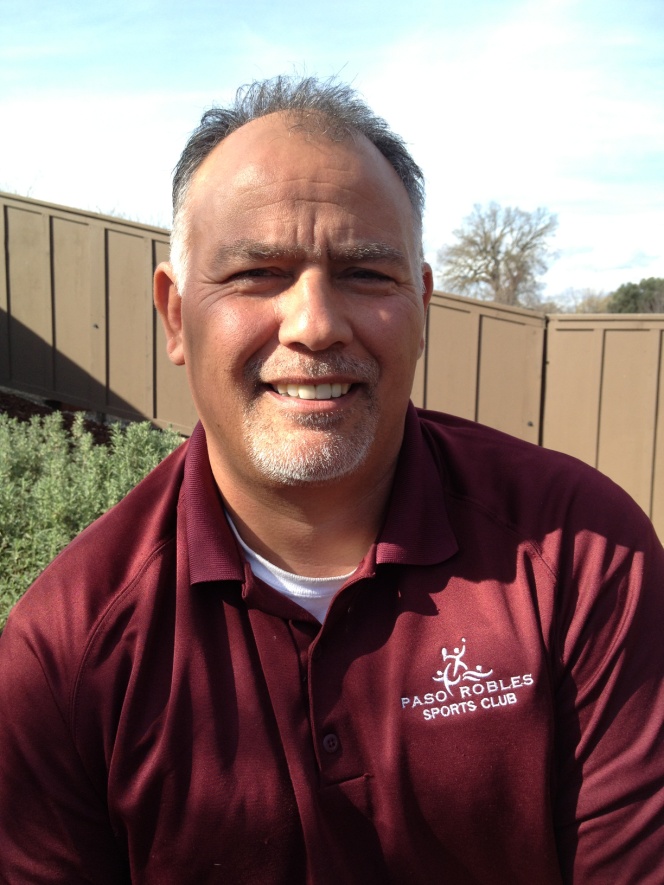 |
| Andre Acebo, Chiropractor |
2. Develop routine activities: an early morning walk, exercise, meditation and quiet time, are effective in getting the day off to a positive start. It is easier to stay positive, by starting positive.
3. Monitor your mental state: being aware of the cause of your negative mood makes it easier to return to the positive. If in a negative state, learn from it and then take action.
4. Create an energizing physical environment: Invest time and money to make your surroundings pleasing and energizing. Small items make a difference in how your space affects your moods. Lighting can provide a mood improvement. Mood improves by cleaning up the bedroom or dirty dishes as clutter is de-energizing. A water fountain can create a feeling of energy and music can offset feelings of isolation.
5. Monitor your negative self-talk: This is a source of low moods, be alert to negative messages. Focus on getting a truthful message, then shifting out of self-defeating criticism. We are usually our own worst critic. Refrain from making judgments ~ instead think positively.
6. Deal with problems effectively: Problems are a part of life and we can learn from them.
Ask yourself:
How am I contributing to this problem?
What life lesson am I missing here?
What is the worst that can happen and how can I improve on that?
What am I doing right?
What am I going to do differently?
7. Attract what you need. Time and energy is best spent pursuing desirable goals. Ask others for what you need. On Monday make a list of goals for the week.
8. Be a positive energy source: Negative energy attracts negative results. Keep your own mood positive and suppress negative behavior in others. Pay it forward. For every kind deed offered to you, do a kind deed for someone else.
9. Avoid using negative energy as an energy source: Negative people create busyness, use deadlines, crises and problems to keep them going. Serious burnout is the eventual result of becoming dependent on negative energy.
10. Ease up on the internal life commentary. If you want to be happy, stop telling yourself you’re miserable.
By Bruce St. John, Leadership Coach
Cafe
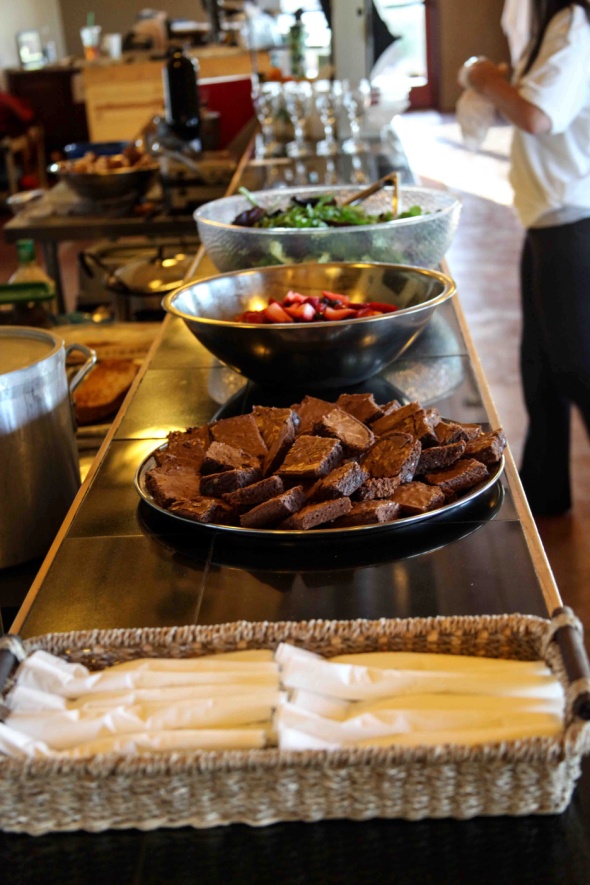 Thank you so much to all that participated and ate at Dinner and Doubles last month! We had a blast preparing to feed your hard working tummies!
Thank you so much to all that participated and ate at Dinner and Doubles last month! We had a blast preparing to feed your hard working tummies!
See you in the Cafe!
Lindsey Taylor, Cafe Director
Swimming

Coach Spence will be out of town next week from September 2nd through the 7th. Swim team practices will be held at the same times except for there will be no 3:30 group until he returns on the 9th. The pool use time for swim team is as follows:
Swim Team Lanes Member lanes
3:30-4:00pm | 1 lane | 7 lanes open
4:00-4:30pm | 8 lanes | 0 lanes open
4:30-5:00pm | 5 lanes | 3 lanes open
5:00-5:30pm | 4 lanes | 4 lanes open
5:00-7:00am | 3 lanes | 5 lanes open
This will be an exciting week for the team, with all of our returning year round swimmers and with the new information that will be attained at the American Swim Coaches Association World Clinic. This is held once a year when USA Swimming incites college and Olympic coaches from around the world to lecture and share their knowledge about the sport of swimming. They cover everything from infant lessons to masters swimming. It is also a great place to meet and network with college coaches for our future scholar athletes.
